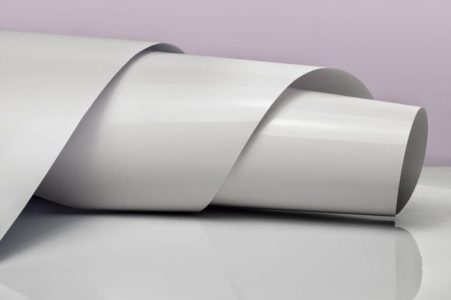Recently, highly calendered inkjet papers have been released which are described as having a “coated feel” and which perform much like a matte or silk mill coated paper. What exactly are these papers and should they be categorized as treated or coated?

First, lets explain the difference in treated and coated paper as it pertains to the paper mill’s manufacturing process.
Both inkjet treated and inkjet coated papers contain a special formulation to reduce the dynamic interaction between inkjet ink and paper. Inkjet ink when jetted, should yield a large color gamut keeping the ink colorant higher on the paper surface while allowing the ink carrier to rapidly evaporate from, or absorb into, the paper. This balanced process will slow ink colorant absorption, assist with ink carrier absorption/evaporation and reduce curl, cockle, coalescence, mottle and color-to-color bleed through from rewetting.
Treated inkjet paper is manufactured by adding an additive formulation to assist ink colorants in staying closer to the paper surface. This light-weight additive can be added to a paper mixture, previous to the paper machine, in the actual slurry, before paper formation. It can also be lightly applied just after the paper is formed. Once the paper is complete, it is compressed through a series of steel rollers. For each of the above processes, the additive disburses to different levels in the Z direction of the paper. The finished paper is characterized by higher porosity enabling faster drying while trapping the colorant higher in the paper fibers.
Coated inkjet paper is created by adding an even surface coating across a preformed base paper by a separate process using an inline or offline post-coating unit. Once the paper is coated, it is “highly calendered” by running it through a series of high pressure, heated steel rollers to form a slick and smooth surface. The objective of highly calendering a sheet is to modify the surface of the paper to eliminate roughness, thereby creating varying levels of smoothness and gloss. The coated paper process provides a low porosity surface which keeps ink colorant on the paper surface and considerably slows absorption of the colorant and carrier into the sheet. Inkjet coated papers are more expensive than treated papers as they involve more steps in their manufacturing process, as well as expensive specialized coating chemistry and application equipment.
Now Back to those “Coated Feel” Papers. . .
Paper makers today are merging the process of the inkjet “treated” paper manufacturing and the portion of the coated paper process related to “highly calendering” to create a hybrid paper which can compete with matte and silk mill inkjet coated paper grades. These are treated, highly calendered inkjet papers with a “coated feel.”
These hybrid manufactured papers are treated and then highly calendared to give the paper surface a tight slick surface much like a coated grade. They perform much like a mill coated grade and are sometimes a great replacement for coated matte and silk coated papers, especially for the lightweight book markets.
Now it is a question of categorization, and you know how we love to try to categorize things in a practical way here at Inkjet Insight…
- If the these hybrid papers are actually “treated” and less expensive to manufacture than coated, should they be properly categorized as treated?
- If they “perform” and are a viable replacement for some coated paper markets, should they be categorized as coated even though technically they are not?
- Or should we add a new category to our ever confusing inkjet paper world.
Inkjet Insight’s Paper Finder currently categorizes paper according to its manufacturing process to help printers understand a papers manufacturing process as it relates to its market pricing. But what if a paper mill categorizes a paper by the market it serves and not how it is truly manufactured. How should it be listed for the consumer?
We don’t currently track a field for “highly-calendered” in our database, but are considering adding it because of the value of these hybrid papers on a price/performance basis. Would this be useful?
Tell me what you think. Do you feel these hybrid papers need to be categorized differently? Does it even matter as long as it performs to your expectations? Let us know.
Mary
